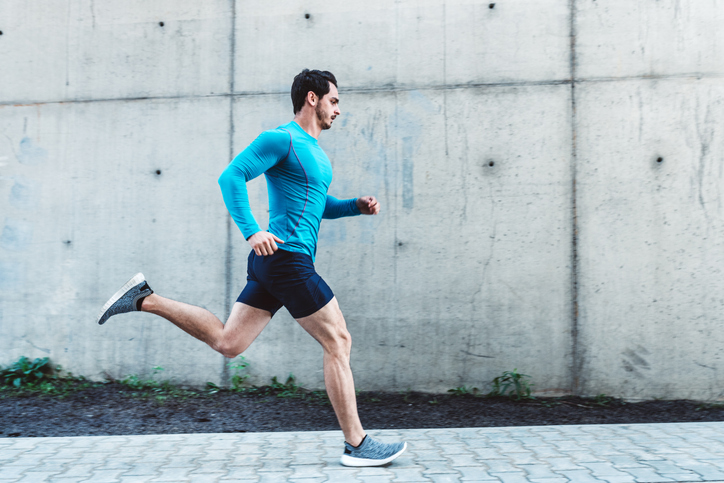Cycling vs running: Which type of cardio is best?
Cycling vs running has enthusiasts from both sides claiming the superiority of their favored pursuit. But is one truly a better use of your time and energy?

You’ve likely come across the debate between cycling vs running before, given the meteoric popularity that both activities possess, not to mention their shared reputation as excellent ways to stay in shape. But framed in terms of key issues such as energy expenditure, muscle growth, joint impact and cost barriers, does a true winner emerge?
Whether you’re considering jumping ship from one sport to the other, considering either for the first time or perhaps are torn between the best treadmills for home and the best exercise bikes as you look at upgrading your home workout regime, here’s some insight to help shape your thoughts. Whilst on the whole, both activities offer similar outcomes, there are some key differences that you most definitely will want to be aware of.
Energy expenditure
In this busy world, the top priority for many people is efficiency. What will give you the best results for the time and energy that you are expending? According to exercise physiologist Professor Richard Davison, outcomes are broadly similar, unless you plan on exercising for a longer spell of time: “Metabolically, there is relatively little difference between the two modes. With both it is possible to stress both central and peripheral physiological systems causing them to adapt and get better,” he explains.

Professor Richard Davison is a professor of exercise physiology and Head of TNE and Mobility at the University of the West of Scotland. Specifically he has an international reputation in investigating the factors that influence cycling performance and the physiological responses to cycle ergometry.
However, Davison argues that cycling comes into its own if you want to invest some time and really ramp up the calorie burn, not least because of the reduced impact upon your body. As Davison states: “With a relatively limited amount of training it is not that difficult to cycle for three to four hours, however running for that duration would require a considerable length of training to withstand the physical demands of running for that long. In addition the recovery from three hours of running could be significant due to muscle and joint damage.”
As such, that means that if you’re looking to put some serious time in, cycling could be a better option to burn heavy amounts of calories with less impact upon your joints and muscles. As Davison puts it: “It is generally accepted that professional cyclists expend more energy during exercise than any other humans on the planet, regularly exceeding 6000 calories per day and doing that most days of the year, so if you want to lose weight, cycling can potentially be a better option.”

Muscle impact
Whilst we’ve already discussed joint impact above, what about the effect both activities have upon your muscles? Running activates your muscles in a wider range of ways than cycling, which on the surface seems like an advantage. However, as Davison points out, that also means that your muscles are being damaged in a greater number of ways, likely leading to longer recovery times and increasing the risk of injury.
“Cycling generally only involves shortening muscle activation (concentric) whereas running will potentially include concentric, eccentric and isometric contractions,” outlines Davison.
“Activating the latter two causes significantly more muscle damage because of the higher forces involved and thus causes muscle pain.”
This doesn’t mean that running should be avoided as remember, muscle damage is key to muscle growth, but it should be a point for consideration when you think about training frequency and the number of recovery days you wish to have.
Bone density
All fitness enthusiasts, especially those who are older (and even more so if they are female) should take note: cycling does little to improve bone density as it isn’t a weight bearing exercise. As we get older, our bones weaken. Weight-bearing training is proven to consolidate the density of our bones.
“To slow/stop this process we should undertake a range of weight-bearing exercises combined with adequate nutrition,” explains Davison. “The fact that your weight is supported by a bike can be an advantage in some cases, particularly if you are overweight or have some joint problems, but it is also a disadvantage as your bones are not subject to adequate stress to help them maintain structure and strength. Therefore if your predominant mode of exercise is cycling then it is advisable to occasionally include some load-bearing exercise like running or walking.”
As with all things, balance is the key but the requirement to strengthen bones should be carefully balanced against joint impact and the risk of injury. If running proves to be too much, then walking or carefully-tailored resistance training are adequate alternatives.

Cost and convenience
Of course, cost is a factor too, with more economic forms of exercise often offering greater appeal. Running is effectively a free way to train, although investing in a pair of good quality running shoes is advisable to protect yourself against injury. Yet, even considering this expense, obtaining good quality cycling gear will cost much, much more.
As Davison puts it: “The most expensive bikes and other cycling equipment could easily exceed ten thousand pounds whereas even some of the best running shoes and kit would only be in the hundreds of pounds. These differences would also manifest in ongoing costs in terms of maintenance and replacement.”
However, if you're looking for an at-home exercise machine, the best budget exercise bikes tend to come in much cheaper than even the most affordable treadmills.
And what of convenience? Whilst engaging in both activities outdoors is simple enough, if you’re a gym user, you might be better off sticking to running. “Running at the gym is relatively easy and most gym treadmills are of a fairly good quality,” argues Davison, “unfortunately the same cannot be said for gym bikes. Most regular cyclists hate standard gym bikes finding them extremely uncomfortable, although there are now a very large range of specific indoor cycling trainers and online platforms to enable indoor training when the weather is cold and/or wet.”
Overall, no matter which pursuit you decide to take up, the benefits are broadly similar although cycling may help you to burn more calories if you have the time to spare. As with every form of exercise, part of the fun is getting out there and trying different things, challenging your body and seeing how it responds. And you don’t have to choose…who says you can’t do both?
Sign up for the Live Science daily newsletter now
Get the world’s most fascinating discoveries delivered straight to your inbox.
Dan Cooper is an experienced fitness writer who firmly believes in the power of running. The hardest race he has completed so far was Tough Guy, the world’s oldest and most demanding OCR event. There he learned that you may be able to outpace opponents, but outrunning hypothermia? That's a different race entirely.











